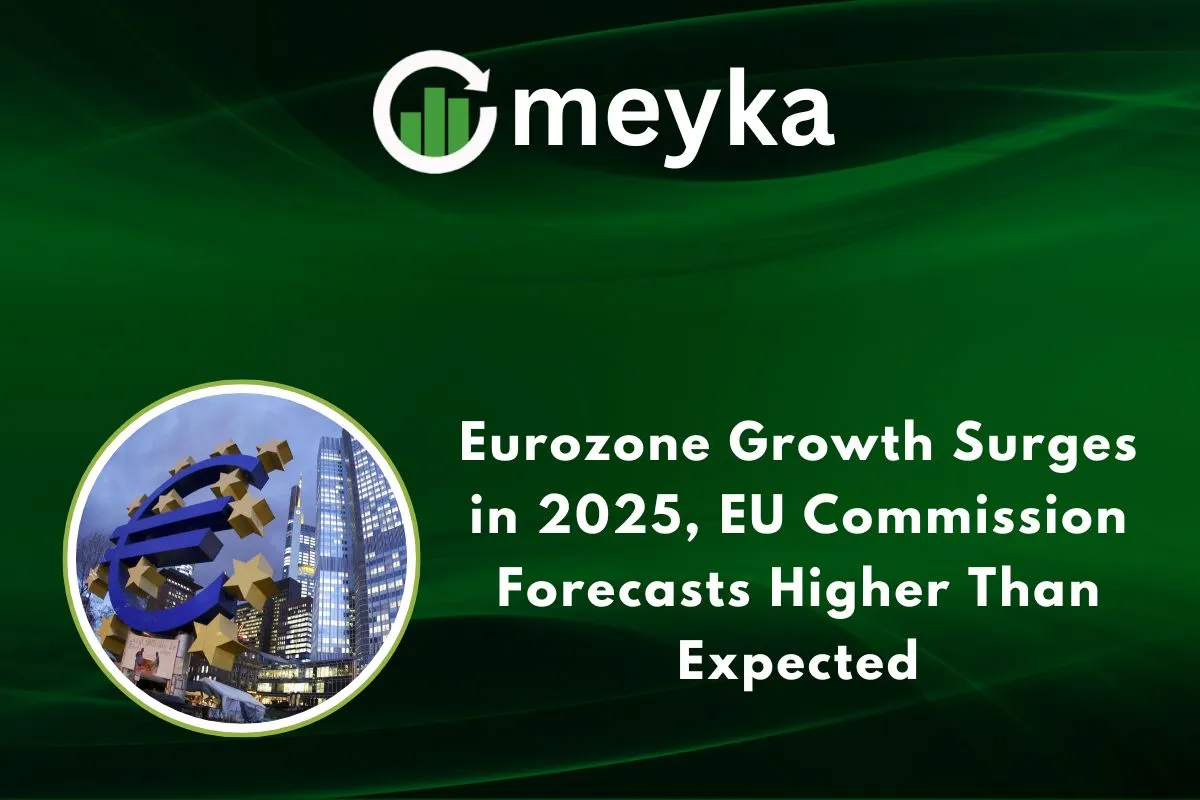Eurozone Growth Surges in 2025, EU Commission Forecasts Higher Than Expected
We are seeing a surprising rebound in the Eurozone economy. According to the latest forecast from the European Commission, the euro area’s GDP is expected to grow by 1.3% in 2025, a strong upgrade from its earlier projection. This is a clear sign that the region is bouncing back more forcefully than many had assumed. Inflation is also set to ease, with the Commission forecasting a drop to 2.1%, getting closer to the European Central Bank’s (ECB) target. Meanwhile, the labor market remains relatively solid, which adds further hope for sustained recovery. As we watch this turnaround, we need to ask: What’s driving it? And how long can this momentum last?
Key Figures and Forecasts
Let’s dig into the numbers because they really tell the story. In its Spring 2025 Economic Forecast, the European Commission predicted 0.9% GDP growth for the euro area in 2025, then a pickup to 1.4% in 2026. But in a newer update, the Commission raised its 2025 forecast to 1.3%, driven by stronger-than-expected activity. That’s a big jump. On the inflation front, headline inflation for the euro area is expected to ease from 2.4% in 2024 to 2.1% in 2025, before falling further to 1.9% in 2026. The ECB’s own projections align more or less: they expect 0.9% GDP growth in 2025, then 1.2% in 2026, and 1.3% in 2027, with inflation moderating toward its target.
In terms of the job market, the eurozone’s unemployment rate is expected to fall to 6.3% in 2025, according to the Commission. Now, these are average numbers; the story varies a lot across different countries, and that’s something we’ll explore next.
Factors Driving Eurozone Growth
So, what’s powering this stronger-than-expected growth? A few key forces are at work:
Export Surge
A big part of the story is a jump in exports, especially in the first half of the year. Firms seem to have boosted shipments ahead of possible tariff hikes, and this has helped lift demand.
Consumer Spending
People in several euro area countries are spending more. Even though inflation remains, easing price pressures are helping. Plus, real wages (wages after inflation) are expected to recover, which supports household consumption.
Investment Upswing
There’s more investment happening. Some of it is public, especially in green energy and infrastructure, and some is private. This is helping fuel fixed capital formation.
Monetary Support
Financial conditions have improved. The ECB’s recent rate cuts have eased borrowing costs. That helps both firms and households.
Global Demand
Even with uncertainty, there is solid foreign demand for eurozone goods. This is helping exporters, especially in sectors like manufacturing.
Sector-Wise Analysis
Breaking it down by sector helps us see where the strength is coming from:
- Manufacturing: The industrial sector is showing signs of recovery. Some purchasing managers’ index (PMI) data suggest growth, which means more orders and higher production.
- Services: Services, from tourism to IT to finance, are slowly gaining momentum. As consumer confidence improves, service firms are benefiting.
- Green Energy & Infrastructure: Investment in green technology is not just a policy fad. It’s becoming a real engine for growth. Governments and firms are channeling money into renewable energy, energy efficiency, and cleaner infrastructure.
- Challenges in Supply Chains: Despite the positives, there are still risks. Some companies face supply chain bottlenecks, labor shortages, and higher production costs. These could temper growth if not managed well.
Risks and Challenges
Even with this upbeat forecast, we must stay realistic. Several risks could derail part of the recovery:
- Geopolitical Tensions: Trade uncertainty is still a concern, especially with protectionist moves and the threat of tariffs. These tensions could hurt exports.
- Inflation Pressures: While inflation is expected to fall, costs, especially energy and food, could spike again, slowing growth.
- Monetary Policy Risk: If the ECB reverses its rate cuts too quickly, borrowing could get expensive again. That could hurt growth.
- Public Debt: Faster growth is good, but deficits are also rising. According to forecasts, the eurozone’s budget deficit is set to increase, and public debt is projected to go up as well. High debt might limit how much governments can spend to support future growth.
- External Shocks: Unexpected shocks like climate disasters, energy supply disruptions, or a global slowdown could derail this momentum.
Implications for Investors and Businesses
So, what does this mean for companies, investors, and decision-makers?
- Investors might seek opportunities in sectors that are riding the growth wave, like renewable energy, technology, and manufacturing. A stable euro and improving exports make the eurozone more attractive.
- Businesses could benefit from increasing domestic demand and easier financing conditions. Firms should consider investing now in growth areas like green infrastructure.
- Policymakers need to balance growth and fiscal caution. While investing in infrastructure and green projects supports future growth, they must also keep an eye on rising public debt.
- Long-term Strategy Companies should plan for a future where green energy, digital transformation, and sustainability are central. The eurozone’s resilience could be a base for long-term expansion.
Conclusion
The eurozone’s economy is showing surprising strength in 2025. The European Commission’s upward revision of its growth forecast, boosted by exports, consumer spending, and investment, signals new optimism. But this recovery isn’t risk-free. Inflation, high public debt, and global uncertainty remain. As we move forward, we must stay hopeful, yet cautious. The eurozone’s outlook is brighter than many expected, but sustaining this growth will demand smart policy, steady investments, and careful risk management.
FAQS
We are projected to grow about 1.1% in 2025 in the EU.
Germany has the strongest economy in the EU.
The euro‑area (Eurozone) is forecasted to grow 0.9% in 2025.
Disclaimer:
The content shared by Meyka AI PTY LTD is solely for research and informational purposes. Meyka is not a financial advisory service, and the information provided should not be considered investment or trading advice.






